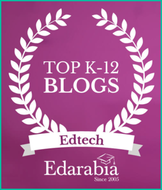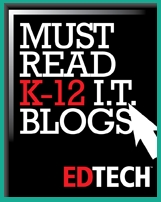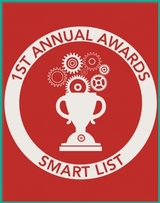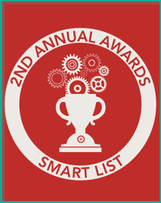
- Desktop/Laptop computers - Over the last few years, ‘Googling’ something has become a valid colloquial verb among tutors and students. To look up information about literally anything under the sun, all that one requires is an internet-enabled PC or laptop. Punching in a query leads to results being displayed within a fraction of a second (those long hours of scouring books at libraries are no longer required!) And many educational organizations now provide laptops to their students.
- Smartphones - Accessing the web on the go is becoming increasingly popular and necessary for students - and this, in turn, brings to light the role of smartphones. A recent survey revealed that well over 50% of college students had their own smartphone, while a slightly lower percentage carried high-end feature phones. For toddlers and preschoolers too, there have been a spike in the number of Android and iPhone apps for kids.
- Cameras - If a student is interested in photography, nothing gets him/her more excited than having a good-quality digital camera in his/her hand. However, the value of cameras in education goes way beyond this apparent benefit. Teachers from all over are using digital, handheld cameras to monitor and record the activities of students in class, as well as on outdoor trips. Electronic portfolios are also being created to help organize and store these images and recordings.
- Projectors - The days when a teacher went on a lengthy dictation from a text, with students desperately trying to note down every word, have been relegated to the pages of history. Document projectors help in displaying high-clarity images of text pages, graphs, figures, and other educational material on a large screen/board, where it can be viewed by even large groups of students with ease.
- Interactive whiteboards - Browsing the internet in the classroom need not necessarily require a computer or a smartphone. Interactive whiteboards are finding increased acceptance at academic institutes all across the globe. These touch-based boards can be used to visit websites, view informative image galleries, or even to make drawings. Plus, all files on the interactive whiteboard can be easily saved.
- Response pads - There are several mobile applications created by mobile app development companies in India and abroad for fostering interaction between teachers and students. However, a response pad facilitates such interactions on a real-time basis. For instance, during a classroom quiz, students can use the response pad as buzzers. During a multiple-choice test, these pads can be used by students to submit their answers as well.
- Videoconferencing systems - Education is steadily getting decentralized, with most well-known universities having branches in multiple cities. This is where the significance of videoconferencing tools comes into the picture. With the help of remote audiovisual conferences (usually hosted on a computer), instructors from any location can address students from multiple classrooms simultaneously. Videoconferencing is also used by teachers to collaborate with each other.
- Podcasts - Missed an important lecture of your favorite teacher? If the class had been recorded in a podcast, you have no reason to worry. In-depth web podcasts of distinguished professors and professionals also serve as important supplemental material for a student’s education. In fact, students can even create podcasts of their own! Many sophisticated mobile apps for kids have podcast features too.
- Wireless presentation tools - Education technology has gone beyond the concept of making simple Powerpoint presentations for students. Teachers no longer need to monitor/change the slides themselves, thanks to the advent of wireless presenters, which operate on remote laser technology. There are no restrictions on the presentation file formats that can be displayed through these wireless tools either.
- GPS Receivers - Field trips are vital to add a practical dimension to classroom teaching, particularly for students of geology, geography, and other related subjects. While on a trip to an unfamiliar place, a properly functioning GPS receiver comes in extremely handy. Apart from ensuring that a touring group of teachers and students are never lost, the receiver also serves as a weather forecasting tool. GPS receivers are generally designed to withstand relatively rough usage.
- Ebook readers - Nearly 18 million people use Kindle to download and read ebooks - and a significant percentage of that figure are students. From valuable and rare textbooks, to engaging storybooks - literary material of all types can be perused on a good ebook reader (which generally has multi-language support as well). Preschoolers can start off with mobile reading apps for kids, before graduating to an ebook reader.
- Online grading tools - These have made the regular tasks of professional teachers a whole lot easier. Right from attendance reports and seating arrangements in class, to marksheets and overall progress reports of students - all of them can be prepared via these tools (there are designated online grading websites as well). The online reports can be directly sent to parents/guardians too.
MP3 audio players and portable weather stations are two other frequently used tools and gadgets in the domain of contemporary education. The increased exposure to advanced tools and educational software also helps students learn valuable 21st century skills. It’s all about ‘smarter’ education in the present - and technology definitely has a more than important part to play in it.
Author’s Bio:
Ross Smythe is the chief concept developer at Teknowledge Mobile Studio. He regularly writes on the web, on topics related to educational technology. In this piece, he lists out some high-end gadgets and gizmos that aid modern-day teaching learning tasks.












